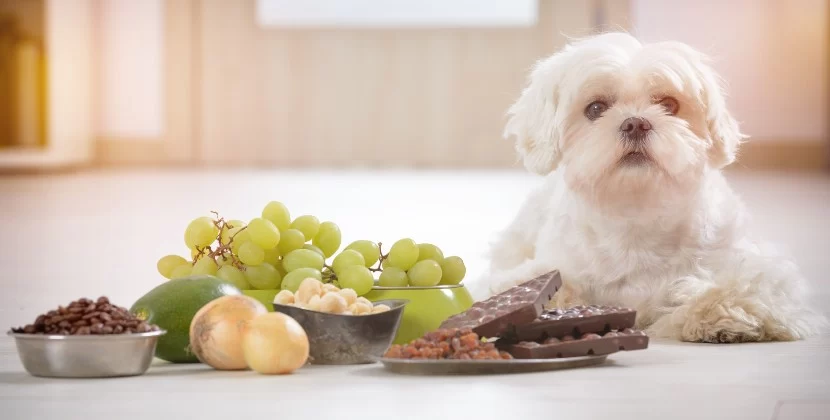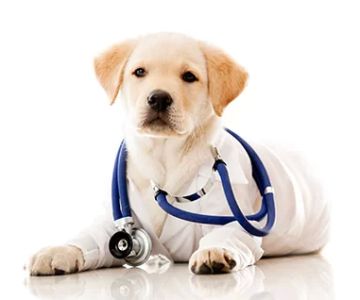What to Do If Your Pet Eats Something Harmful: My Personal Experience
As a pet owner, one of the most frightening things that can happen is realizing that your beloved companion has eaten something harmful. Whether it's a household item, a toxic food, or something they shouldn't have gotten into, the panic sets in quickly. I've been there, and trust me, it’s a stressful moment that no one is ever truly prepared for. But knowing the right steps to take can make all the difference in your pet's well-being. In this article, I’ll share my personal experience, helpful tips, and the critical actions you need to take if your pet eats something harmful.
What Constitutes Harmful for Pets?
Not all foods and substances that humans consume are safe for pets, and many everyday items can pose a significant risk to your furry friend. Some of the most common harmful things pets might ingest include chocolate, grapes, onions, certain medications, household cleaning supplies, and even plants like lilies. These substances can cause various symptoms, ranging from mild gastrointestinal issues to severe organ damage or even death.
In my case, I remember the time when my dog, Max, managed to get into a bag of dark chocolate I had accidentally left within reach. I didn't realize it until I saw him acting strangely, with drooling and pacing around the house. Thankfully, I knew exactly what to do, and my prompt response saved him from a dangerous situation. It’s important to know how to act swiftly in these moments, and that’s exactly what I’ll walk you through now.
Step 1: Assess the Situation
The first thing you need to do is assess the situation calmly. You need to identify what your pet has eaten and how much. Did they eat a large amount of chocolate, or just a few pieces? Was it something toxic like a plant or household cleaner? Determining the type of substance and the quantity is crucial in understanding the severity of the situation. When Max ate the chocolate, I immediately checked the bag to estimate how much he had consumed and whether it was enough to cause harm.
Step 2: Recognize the Symptoms of Poisoning or Harmful Ingestion
Recognizing the symptoms of poisoning is key in understanding how urgent the situation is. Common symptoms of poisoning or harmful ingestion in pets can include:
- Vomiting or diarrhea
- Excessive drooling or foaming at the mouth
- Changes in behavior (such as lethargy or agitation)
- Tremors or seizures
- Loss of appetite or refusal to drink
- Uncoordinated walking or inability to stand
If you notice any of these signs in your pet, it's critical to take immediate action. For example, when Max ate the chocolate, he started to act anxious, and his heart rate seemed faster than usual. I knew these signs were not normal, so I acted quickly, even before he started vomiting, to get him the help he needed.
Step 3: Contact a Veterinarian or Emergency Animal Poison Control
Once you've assessed the situation and recognized the signs of poisoning or harmful ingestion, the next step is to get professional help. In my case, I immediately called our vet’s office, but depending on the situation, you may need to contact an emergency animal poison control hotline. These services are available 24/7 and can provide you with specific instructions based on the substance your pet ingested.
If your vet’s office is closed, there are emergency veterinary clinics that specialize in handling urgent situations like these. Don't wait too long to make that call; time is critical when dealing with poisoning or harmful ingestion. The quicker you respond, the better the chances of your pet’s recovery.
Step 4: Follow Veterinary Instructions and Avoid Self-Treatment
While it can be tempting to try to induce vomiting or treat your pet yourself, it's important to follow your veterinarian’s instructions. In some cases, inducing vomiting can make the situation worse, depending on what the pet ingested. For example, you should never induce vomiting if your pet has consumed a corrosive substance like bleach or a petroleum product like gasoline.
When I called Max’s vet, they gave me specific instructions on how to proceed. They advised me to bring him in immediately to induce vomiting safely and administer activated charcoal to absorb the toxins. In the end, Max was okay because I didn’t try to manage the situation alone, but instead trusted the expertise of the veterinary team.
Step 5: Monitor Your Pet Closely Post-Ingestion
Even after your pet has been treated by a veterinarian, it’s important to continue monitoring them for any changes in behavior or new symptoms. Sometimes the effects of harmful substances can linger or worsen over time, and you want to catch any new developments early. Keep your pet in a quiet, comfortable space, and observe them closely for several hours after the incident.
For Max, we kept him in a calm environment after his visit to the vet and monitored his condition. Thankfully, after a few hours, he began to return to his normal self—no more drooling, no more pacing. But I remained alert and checked in with the vet as recommended to ensure everything was fine.
Preventing Harmful Ingestions in the Future
After going through this experience, I realized just how important it is to keep harmful substances out of my pet's reach. Here are a few preventative measures you can take to reduce the risk of harmful ingestion:
- Store foods, medications, and cleaning supplies in secure cabinets that your pets can't access.
- Be mindful of plants in your home or yard. Research which ones are toxic to pets and remove them if necessary.
- Educate family members and guests about the potential dangers of feeding pets human food or leaving harmful substances within reach.
- Invest in a pet-proof trash can to prevent your pet from rummaging through discarded items.
While accidents can still happen, taking these preventive steps can greatly reduce the likelihood of your pet ingesting something harmful in the future. For me, the experience with Max taught me to be even more vigilant about what’s around the house and how easily pets can get into things they shouldn’t.
Real-Life Story: Max’s Recovery
One of the most memorable moments in our pet-parent journey occurred the day Max ate the chocolate. I remember feeling my heart race as I saw him chewing on something he shouldn't have. Thanks to quick action and the excellent care from our veterinarian, Max was able to recover without any lasting effects. That day, I learned how important it is to remain calm, act swiftly, and seek professional help right away. It was a reminder that, as pet owners, we are responsible for their safety and health, and knowing what to do in an emergency can make all the difference.












